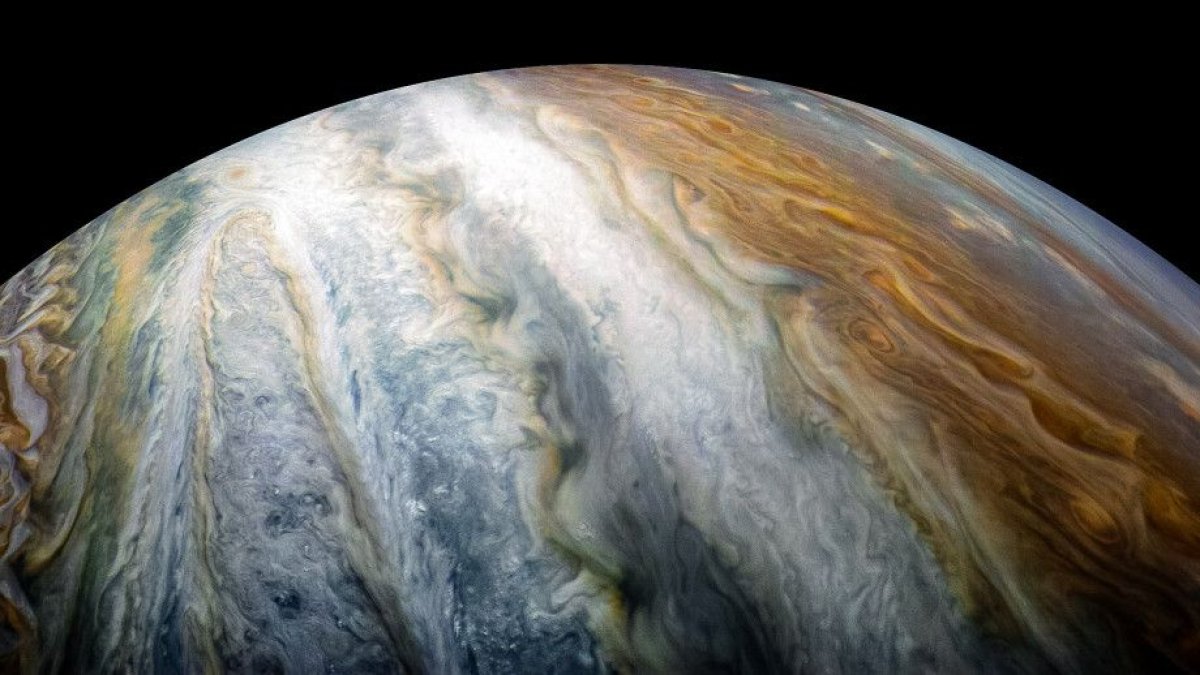Scientists may have finally solved a long-standing mystery related to Jupiter's dramatic colored bands, according to a study published in the Astrophysical Journal.
A team from the Lawrence Livermore National Laboratory (LLNL) and the Australian National University (ANU) have developed a new theory regarding the interactions between the atmosphere of planets and magnetic fields, which has cast light on what's going on below Jupiter's bands—a region which researchers know little about.
Unlike Earth, Jupiter has no solid surface and is composed entirely of gas—mostly hydrogen and helium. Its atmosphere is characterized by several strong jet streams which flow west to east. In the upper atmosphere, these streams carry clouds of ammonia and other elements, forming striking colored bands in shades of white, red, orange, brown and yellow.
There are many theories as to how the jets on Jupiter form and how deep they extend beneath the clouds, however, until recently, there were no direct observations to lend weight to any of them.
"We know a lot about the jet streams in Earth's atmosphere and the key role they play in the weather and climate, but we still have a lot to learn about Jupiter's atmosphere," Navid Constantinou, an author of the study from the ANU's Research School of Earth Sciences, said in a statement.
"Scientists have long debated how deep the jet streams reach beneath the surfaces of Jupiter and other gas giants, and why they do not appear in the Sun's interior."
But in 2016, NASA's Juno spacecraft made precise measurements of the planet's gravitational and magnetic fields, which enabled scientists to conclude that the jet streams reach as deep as 3,000 kilometers (1,864 miles) below the clouds.
The team's new mathematical model predicts that when magnetic fields are sufficiently strong, jet streams are suppressed. When applied to Jupiter, it explains the mystery of why the jets penetrate only so far.

"The gas in the interior of Jupiter is magnetized, so we think our new theory explains why the jet streams go as deep as they do under the gas giant's surface but don't go any deeper," Jeffrey Parker, from the LLNL, said in the statement.
In contrast to Earth where the jet streams are wavy and irregular, those on Jupiter are much straighter.
"There are no continents and mountains below Jupiter's atmosphere to obstruct the path of the jet streams," Parker said. "This makes the jet streams on Jupiter simpler. By studying Jupiter, not only do we unravel the mysteries in the interior of the gas giant, but we can also use Jupiter as a laboratory for studying how atmospheric flows work in general."
Uncommon Knowledge
Newsweek is committed to challenging conventional wisdom and finding connections in the search for common ground.
Newsweek is committed to challenging conventional wisdom and finding connections in the search for common ground.
About the writer
Aristos is a Newsweek science reporter with the London, U.K., bureau. He reports on science and health topics, including; animal, ... Read more
To read how Newsweek uses AI as a newsroom tool, Click here.








